Simple Cow Milking Process For Beginners
While hand milking a cow may seem intimidating at first, after a few attempts it becomes second nature. We have found the cow milking process to be an enjoyable part of our daily routine and love the nourishment it provides to our family.
Our Milk Cow Story
We are suburban kids through and through. Until we purchased our milk cow a few years ago, neither of us had ever milked a thing in our lives. However, we had been enjoying the benefits of consuming raw milk as a staple in our diet for a number of years.
We enjoyed visiting farms, talking to farmers, learning about the process, and dreamed of one day maybe having the opportunity to do it for ourselves.
When we moved to a rural area in Wisconsin, right in the heart of dairy country, we were presented with the opportunity to purchase a Jersey milk cow. She had been the family milk cow of a family we were acquainted with and they no longer had the time to keep up with milking.
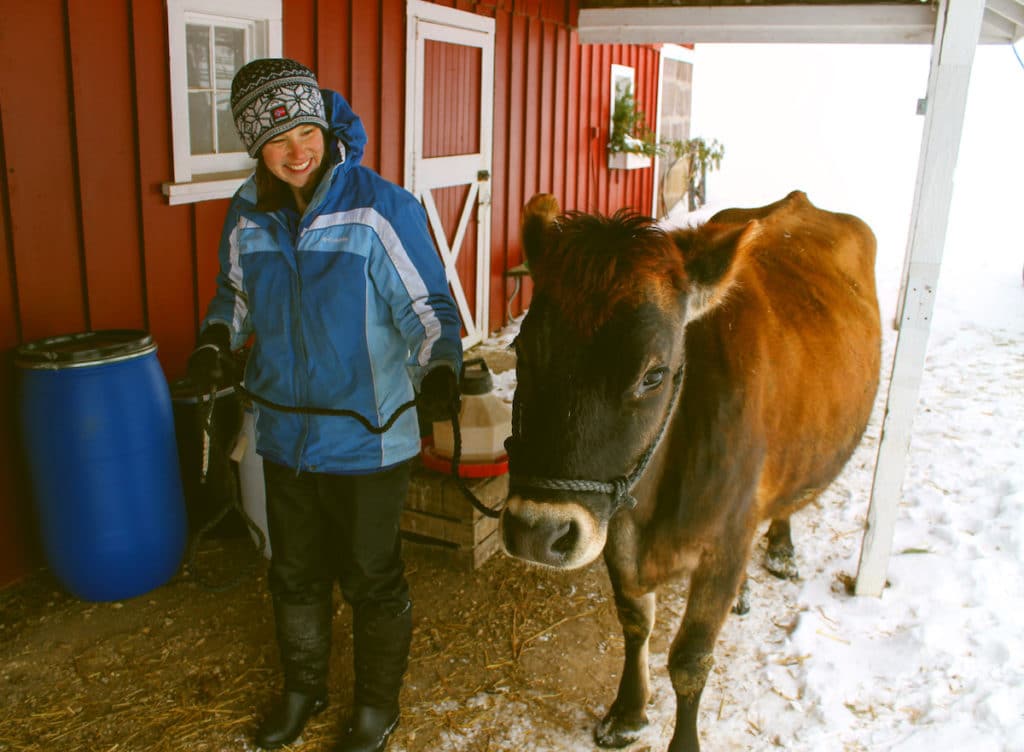
This was not something we were seeking but it fell in our lap. Looking back, we are so glad we said “yes” to that opportunity. Even though at the time we had no experience and very little knowledge with keeping a cow, let alone milking a family milk cow.
We have learned a lot in the last couple of years. Owning a family milk cow has become something we are quite passionate about. You can read more about our experiences in our Owning A Family Milk Cow Basics and Breaking Down the Cost of a Family Milk Cow posts.
Hand Milking vs. Machine Milking
When we purchased our family milk cow, Thimble, this was one of the biggest questions we had and decisions to make.
Machine milking will make the milking process itself quicker and will ensure that she is fully milked out. However, it does require more of an upfront cost, cleaning and maintenance of the machine, and removes some of the unique relational elements that hand milking brings.
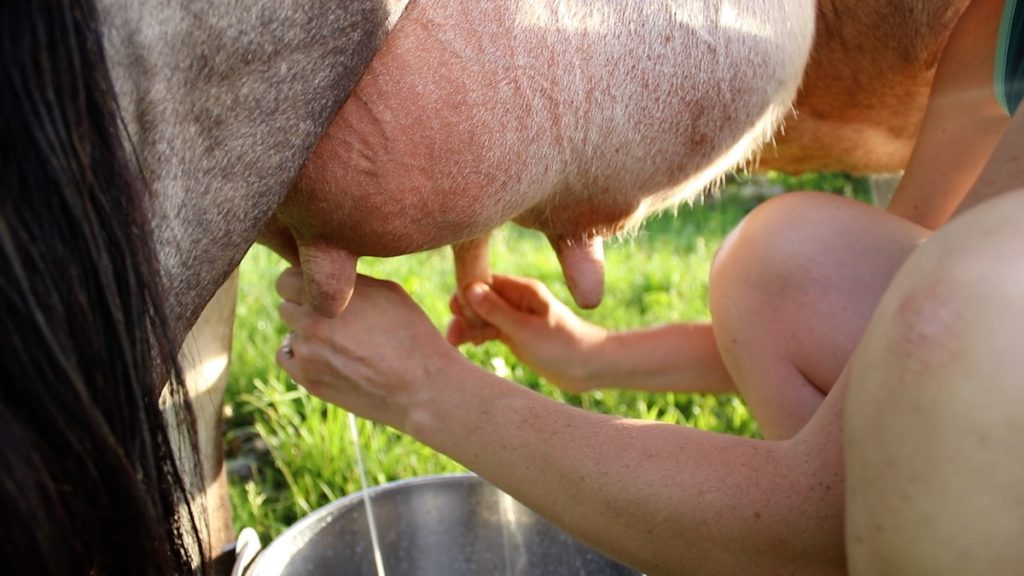
Hand milking requires no special equipment to get going besides your milk bucket and there are no costs for upkeep or maintenance. But, the process itself can be a bit more arduous.
Ultimately, with only having one cow that we were milking each day, we decided to hand milk our cow. If we ever had more cows in the future, a milking machine is something we would reconsider. But for now, hand milking has been a good fit for our situation.
The Cow Milking Process
Even though we were inexperienced milkers when we began our journey, milking is thankfully a simple process and within a few weeks we were milking with confidence.
Equipment Needed
The equipment needed when hand milking a cow is relatively basic and minimal. Following is a list of all of the equipment we use as a part of our milking routine:
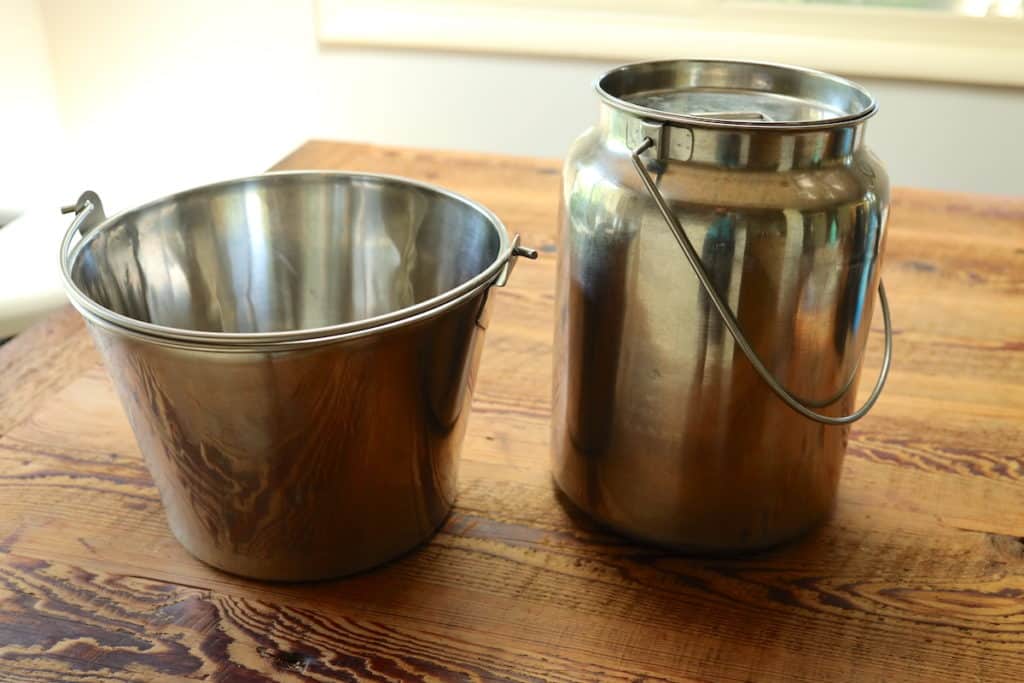
- Halter
- Milk Pail (9 Qt.)
- Milk Bucket with Lid (10 Qt.)
- Bucket for soapy water/This becomes your milking stool to sit on
- Rags for cleaning teats
- 8 Cup Pyrex Measuring Cup
- Mesh Strainer
- Clean Dish Towel for straining
- Milk Bottles (we prefer ½ gallon wide mouth jars)
Step One:
Fill bucket with hot soapy water.
Step Two:
Carry equipment to where you are planning to milk.
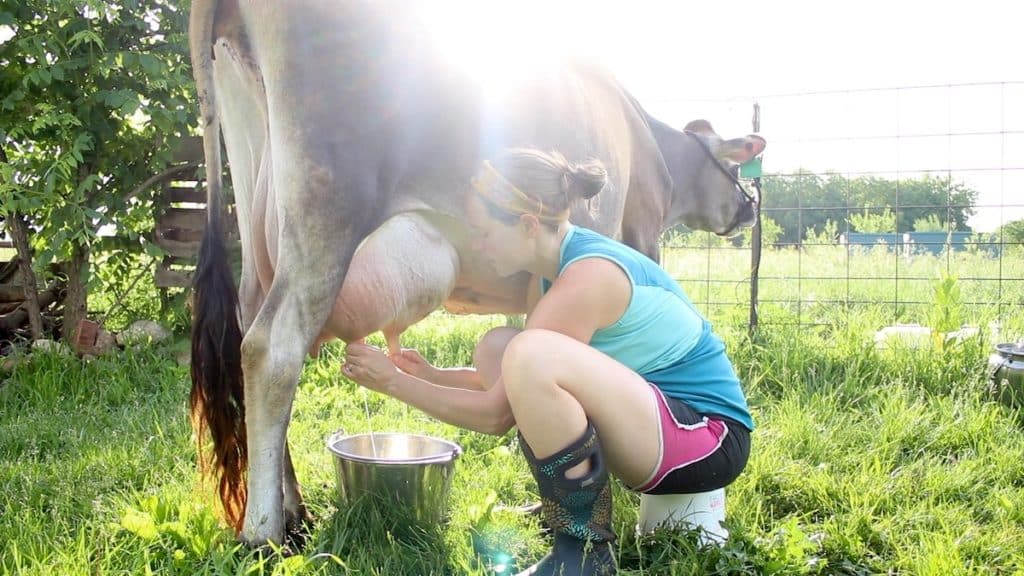
Step Three:
Using a halter, bring your milk cow to where you would like to milk her. While many use a stanchion, we actually prefer to just tie her to a fence post and milk her right outside in the pasture.
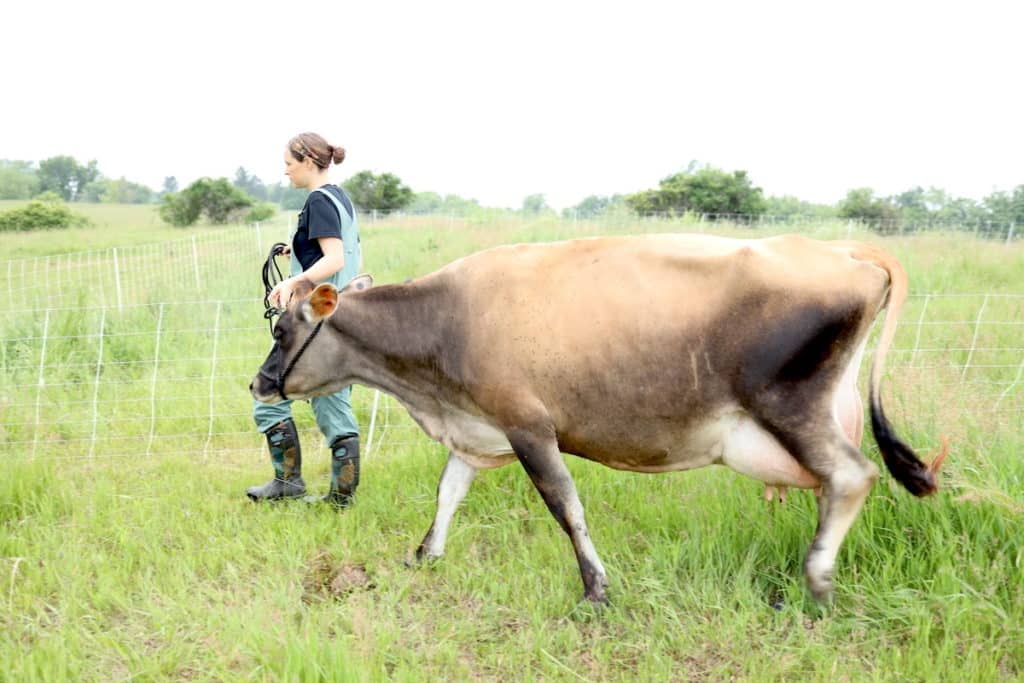
Step Four:
Clean her teats. We do this by putting a clean rag into our bucket with hot soapy water and cleaning each of her teats of any dirt or debris. Thankfully, when cows are on pasture this is normally pretty easy. But, from time to time (especially in the winter), she’ll lay right in a pile of fresh manure and require extra cleaning.

Step Five:
Stripping. This means stripping the cow or squirting out the first few squirts of milk from each teat. This allows you to observe the color of the milk to make sure everything looks good. Discolored milk can be a sign of potential infection. Also, stripping eliminates the extra bacteria present in the first few squirts of milk.
Step Six:
Milking. Once she is cleaned and stripped, she is ready to be milked. We dump out the bucket we had the soapy water in and use that as a stool. Then, we place the milk pail underneath her and begin milking. It normally takes me around 20 minutes to milk out all 4 teats.
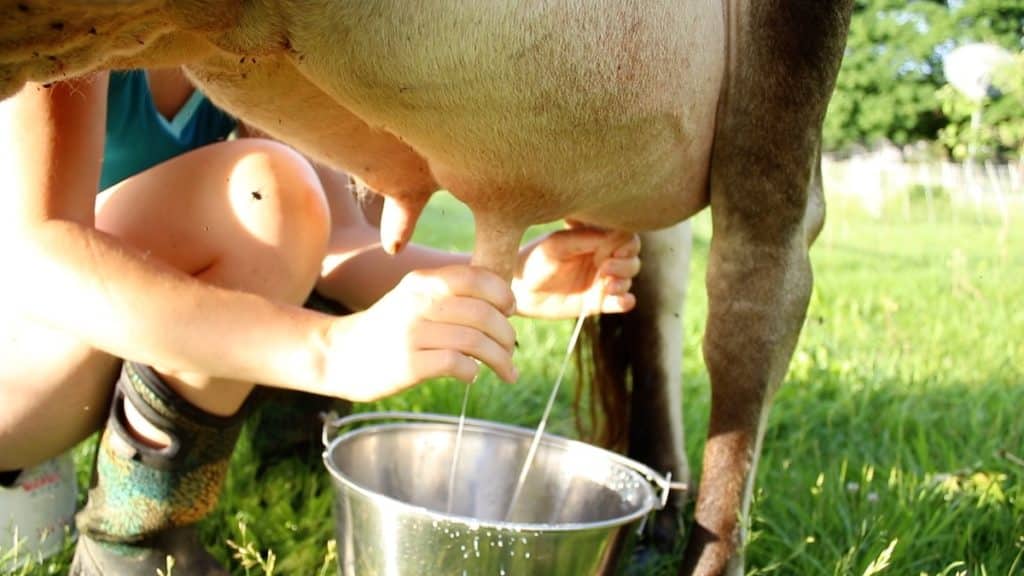
I do like to have two milks pails for the milking process. One that I milk into and the other with a lid that I pour the milk into 3-4 times throughout milking. The second bucket is helpful for two reasons.
- If she happens to kick the bucket, by pouring the milk every so often into the other milk pail with the lid, not all of the milk would be lost.
- Pouring the milk into a pail with a lid helps if it is raining or snowing to protect the milk.
Step Seven:
Straining. After you have collected all that milk, it’s time to strain. Sometimes a bit of dirt, debris or a fly or two can find their way into your milk during milking. While there are fancy strainers for this process, we just use a basic dish cloth and strainer method.
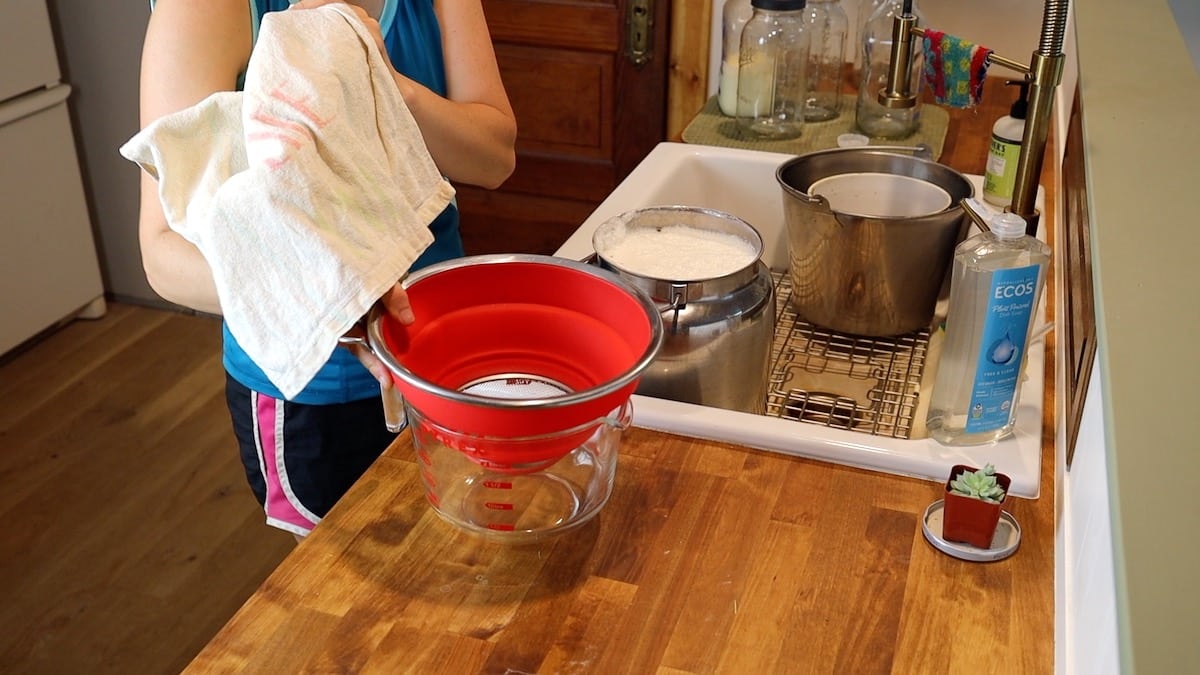
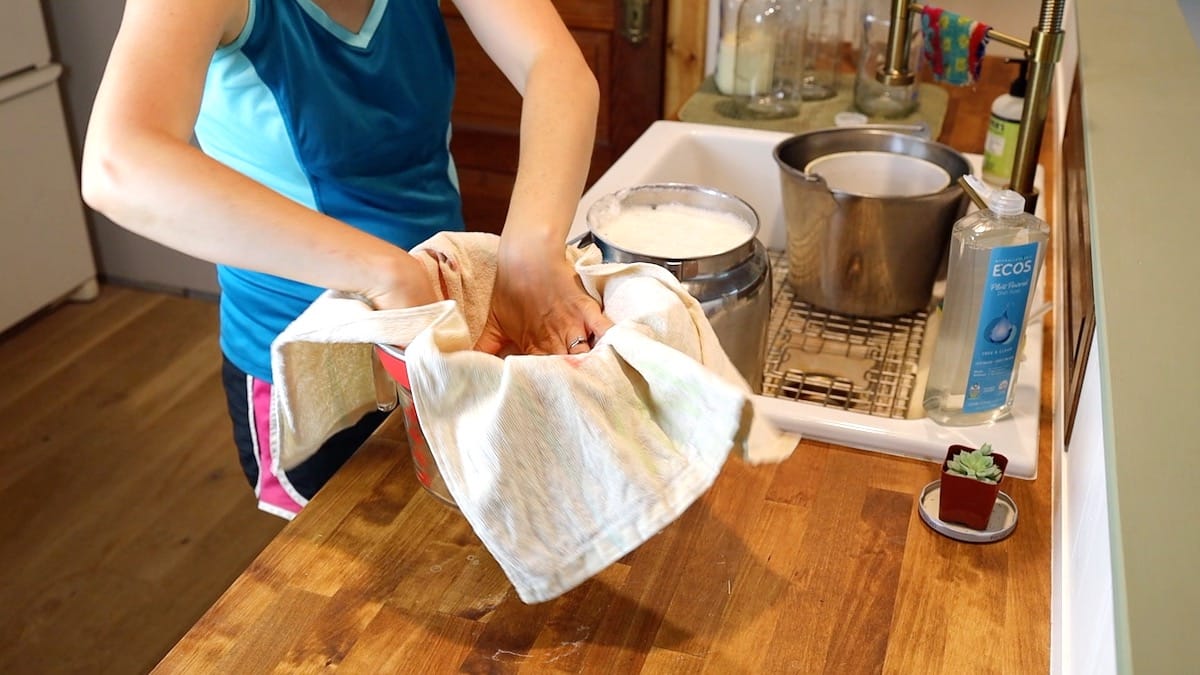
Place a clean dishcloth laid out over a mesh strainer. Put the mesh strainer in an 8 cup pyrex measuring cup or something similar. Pour the milk into the strainer. The towel will strain out any unwanted particles and the milk will flow through.
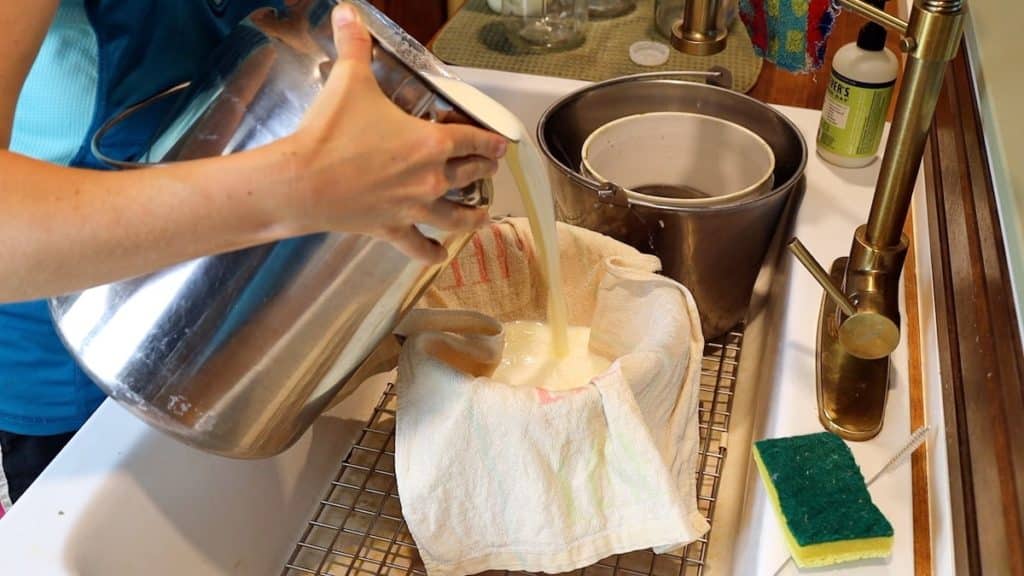
Step Eight:
Pour the milk into jars for storage and refrigerate immediately. You want to make sure the milk is properly chilled right away. We normally just put the milk into the back, most cold part of our fridge. Alternatively, you could chill in the freezer for an hour or two and then transfer to the fridge. Set a timer so you don’t forget to remove milk from freezer (speaking from experience!).
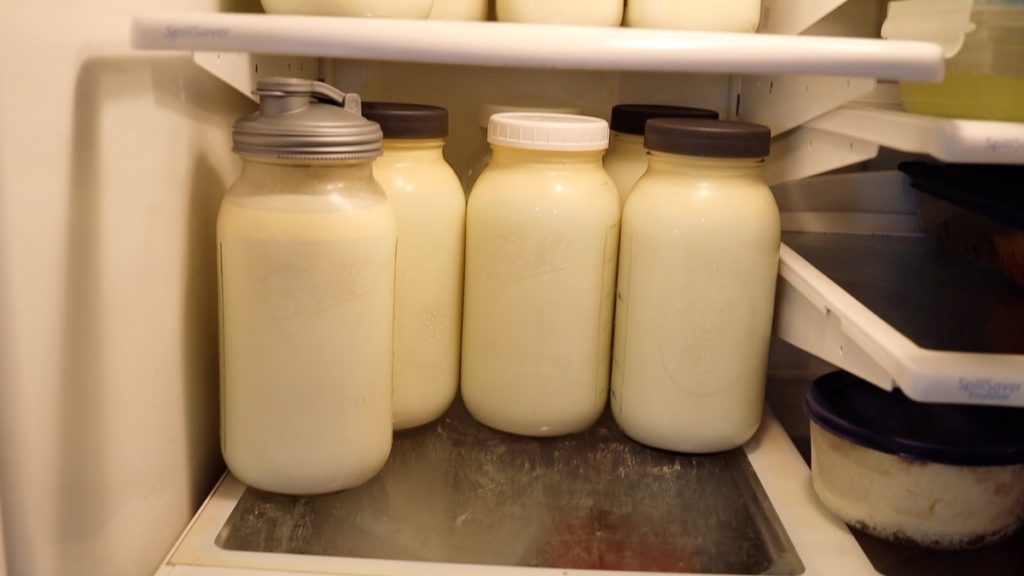
So that’s it. While milking a cow may sound intimidating, don’t let it scare you. We have found our family milk cow to be one of the most gentle, sweet creatures we have encountered and milking has really become a highlight to our days.
Some of the above links are affiliate links. This means we earn a small commission on qualifying purchases at no cost to you. We are so appreciative of your support!
Want to learn more about having a family milk cow? Check out our posts:
- Owning A Family Milk Cow Basics
- Breaking Down the Cost of a Family Milk Cow
- What To Know About Rotational Grazing on a Small Scale
- How Many Cows Per Acre on a Small Farm
- Cows In Winter 101 | How To Keep Dairy or Beef Cattle Warm and Happy
Pin it for later!
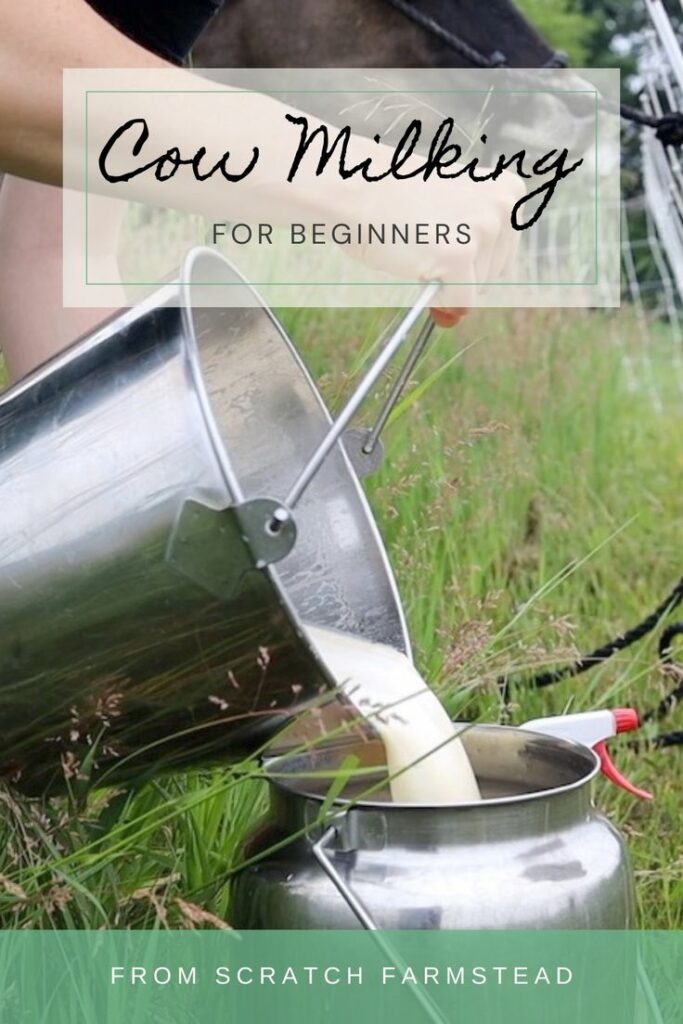
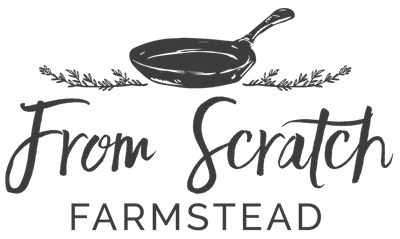
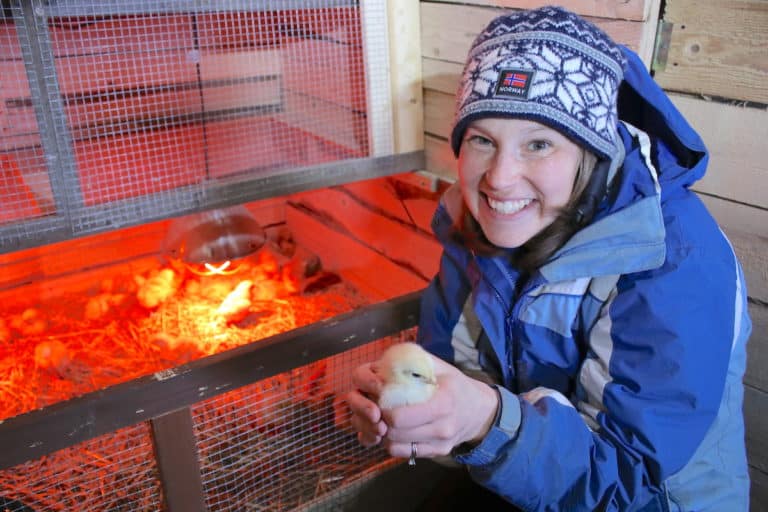

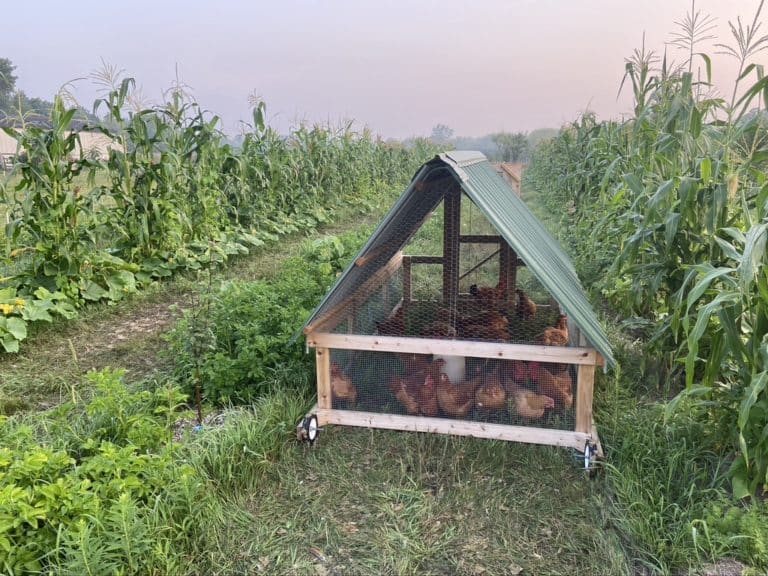
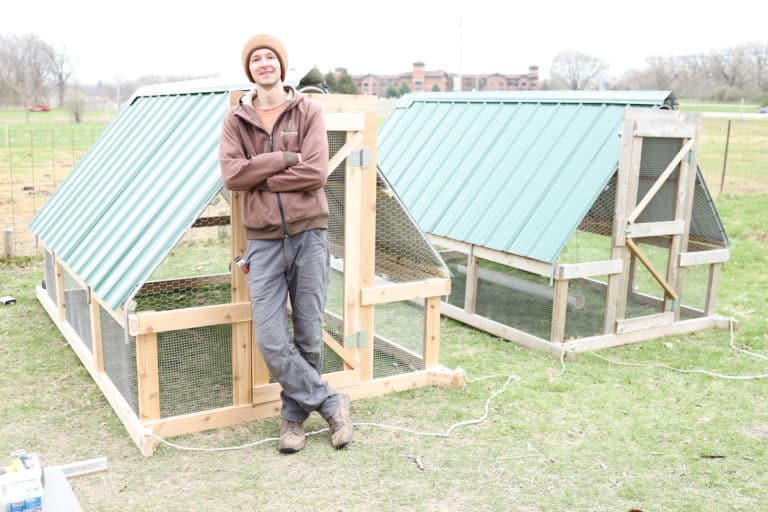

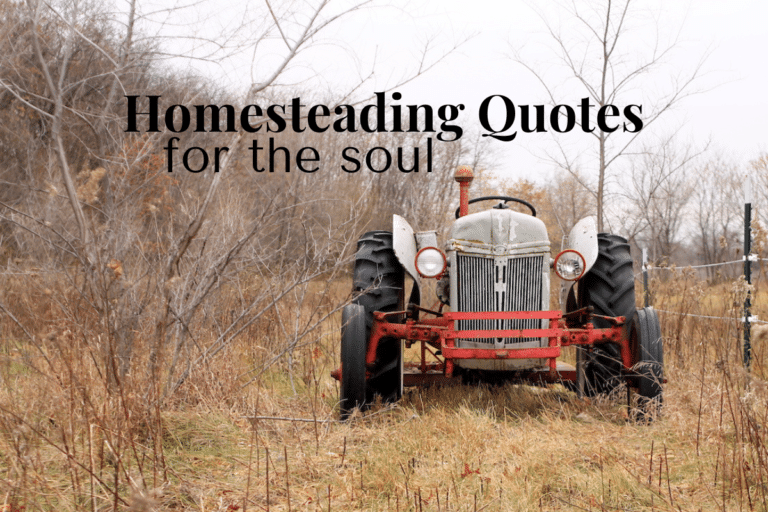
Thank you so very much! I really enjoyed reading this and you made it make so much sense 😀
So glad this was helpful!